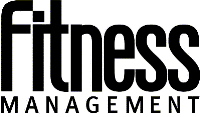
Happy (almost) New Year! The good news is that your fitness center is likely packed to the gills with resolution-wielding exercisers. The bad news? The Writer’s Guild of America is striking, which means that your favorite television shows are on indefinite hiatus until a deal is hammered out between studio bigwigs and Guild leaders. What does this have to do with the fitness industry, you ask? More than you think.
TV has long been a source of ideas for fitness programming. (’Fess up: How many of you have held a Biggest Loser- or Survivor-themed competitions at your facility?) Popular reality shows based on competition are perfect for time-crunched managers to make their own. Now, thanks to the writer’s strike, studios are relying even more on the reality formula to fill empty slots in their program schedule. They’re even dragging out some old favorites, like American Gladiators. The new and improved version of the program, hosted by Laila Ali and Hulk Hogan, debuts Sunday, January 6, on NBC. I’ll wait while you set your TiVo.
If you’re starting to mull ways to bastardize the American Gladiators formula for your fitness center, I’m sad to say that you’re too late. Someone has beaten you to it. The Tribune Chronicle reports that, in May, the American Gladiators Sports-Fitness Training facility will open in Niles, Ohio. I imagine it will be a place where members can act out their long-dormant fantasies of wearing helmets and spandex, and going head to head with muscle-bound opponents.
I find it hard to imagine there is anyone out there yearning to be an American Gladiator — save a few adult males with memories of Saturday mornings watching long-haired dudes with names like Blaze and Firestorm beat the living daylights out of hapless weekend warriors. To be completely honest, I can’t imagine anyone wanting to participate in these kinds of activities sober, but that probably says more about me than anything.
Still, John Ferraro Sr., who is heading the project along with his two sons, assures skeptics that, “It will be fantastic.” The fitness center will offer exercise facilities on three levels. Fitness challenge competitions will be staged between members, and with representatives of other facilities, according to the article.
The Ferraros say they plan to franchise their idea, and believe that people all across the U.S. are chomping at the bit for the kind of campy competition the TV show embraces. “People ask me, why here?” Ferraro told the Tribune Chronicle. “People here are no different than they are in Beverly Hills.” Really? I used to live in Los Angeles, and I have a hard time picturing the gaunt, moneyed shopoholics who haunt Rodeo Drive forgoing their private Pilates sessions for a round of sweaty jousting.
Maybe I’m jaded. Maybe the recent faltering of fitness franchises has hardened my journalist’s heart, and I fail to appreciate the secret desires of the American public to act out their adolescent fantasies. Maybe the next big fitness franchise idea really is found in old TV favorites. I have to wonder if my husband wouldn’t get in line for the chance to wear a leather Speedo and raise a massive sword by a replica of Grayskull Castle.
It might be fun for a day, but is play-acting the way people would choose to get their daily dose of exercise? I suppose anything is possible … but I doubt it.































